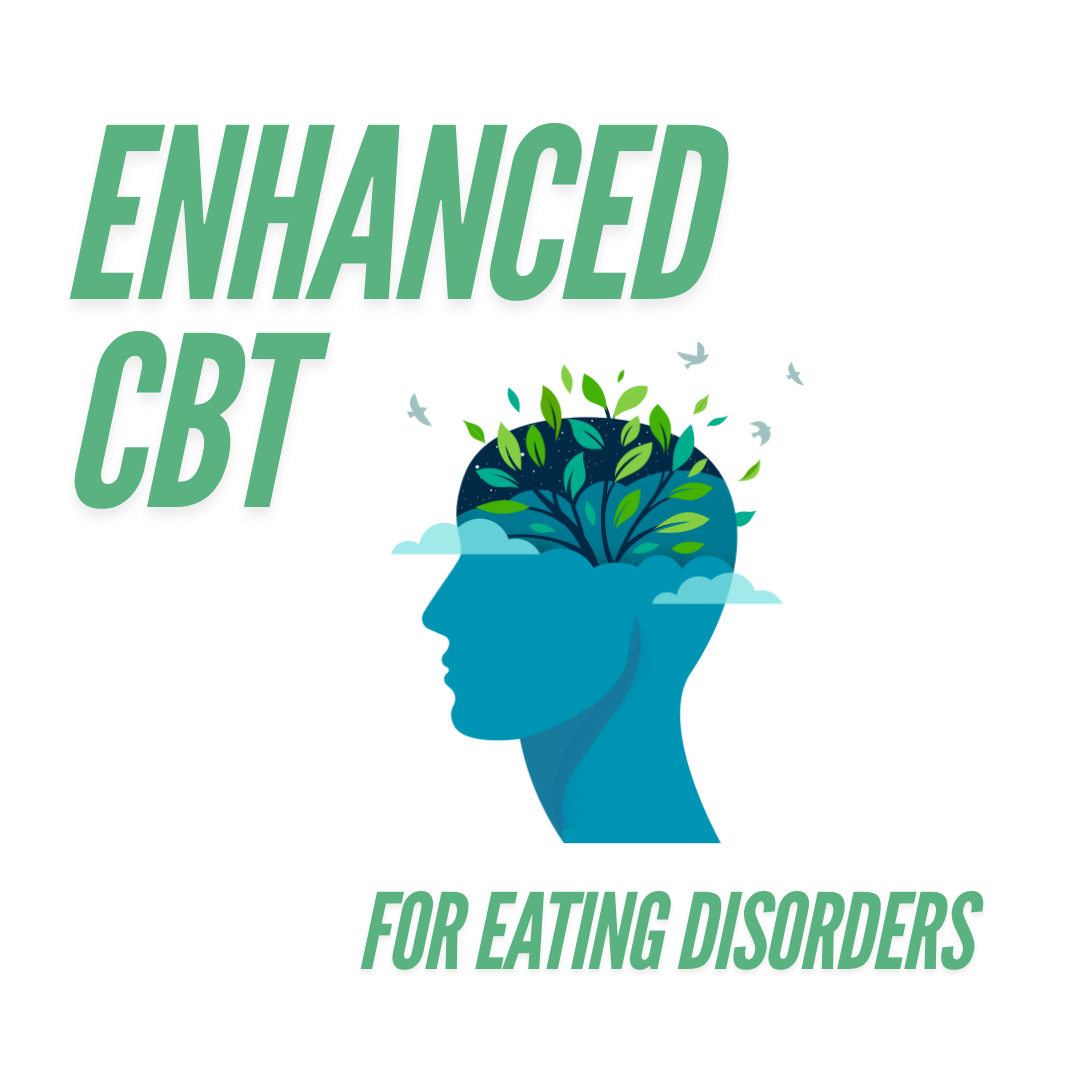Enhanced Cognitive Behavioral Therapy (CBT-E)
The Leading Treatment for Eating Disorders
Consistently across research trials, Enhanced Cognitive Behavioral Therapy (CBT-E) is shown to be the most effective treatment for eating disorders in adults. CBT-E is without a doubt the leading intervention for most individuals with Bulimia Nervosa and Binge Eating Disorder. For adult Anorexia – a more difficult condition to treat once the behaviors have habituated – CBT-E is also shown to be a first line treatment and effective in the majority of cases.CBT-E is a short-term, time limited, individual outpatient therapy. Patients work one-on-one with their CBT therapist to uncover the factors that keep their eating problem going - and then systematically they together, tackle them in the treatment.For Bulimia and Binge Eating Disorder, CBT-E treatment consists of 20 treatment sessions over 20 weeks. For people who are underweight, the treatment tends to be longer (typically 40-sessions over 40 weeks for Anorexia).
The Stages of CBT-E
CBT-E has four stages. In Stage One, the focus is on fully understanding the factors contributing to and maintaining the individual’s eating struggle. Early on, the therapist works with the client to encourage regular, consistent eating (yes, it’s possible). There is a focus on increasing self-awareness and using problem solving techniques to understand why at times eating goes off track. In this first stage of treatment, it is best to meet twice-weekly. A lot of change should occur during this initial stage of treatment (the first 4 to 8 weeks).In the brief second stage, the therapist and client review progress together and construct a plan for Stage Three.Stage Three involves weekly sessions focused on the factors that may be continuing to keep certain eating struggles going. Typically, any intense concern with weight and shape will be addressed thoroughly in this stage of treatment. Dieting and other forms of over-control of food are considered important areas of focus here as well. The therapist will also work with the client to better manage event and mood triggers for disordered eating.Towards the end of Stage Three and in Stage Four the session shifts attention to the future; specifically, on how to reduce vulnerability to setbacks or relapse in the months and years ahead.They say that CBT-E should “fit like a glove.” So while it is a manualized and highly structured treatment with very specific strategies and protocols, it is designed to shape itself to each individual’s needs. The attention is always on the client’s unique picture…. on understanding the ins and outs of the individual’s patterns and triggers.
What To Do
If you are interested in CBT-E, be sure that you seek out providers who practice CBT-E true to its design. Using CBT-E strategies here and then without full fidelity to the model will weaken the treatment. Once you find a provider who practices CBT-E, you can arrange an assessment to see if it is the right treatment for you.
For readers in the NY area, Columbus Park is one of the few settings where you can get CBT-E treatment true to the model. All of our clinicians are intensively trained in CBT-E. We rely on the treatment often because of its efficacy (it really works!) and efficiency (short term, cost effective and manageable even for those with busy lives). Please don’t hesitate to contact us to see if CBT-E will be right for you.

